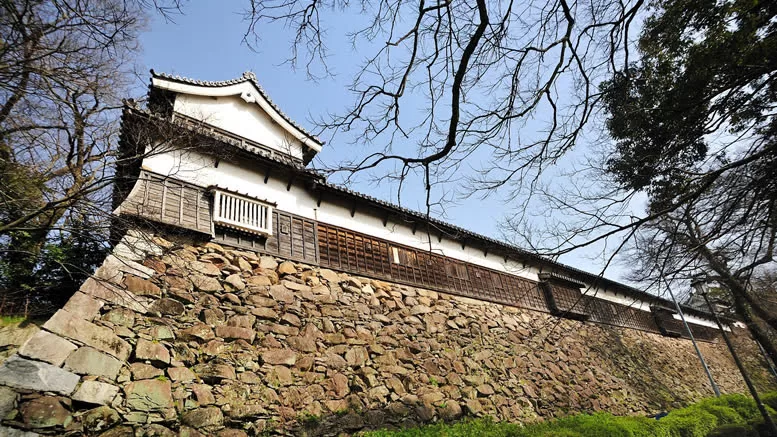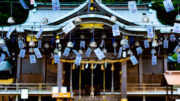 The Fukuoka Castle Ruins, nestled within the expansive Maizuru Park, are a testament to Fukuoka’s rich feudal history and offer a serene retreat in the heart of the city. Once a grand fortress, Fukuoka Castle was constructed in the early 1600s under the orders of Kuroda Nagamasa, a powerful daimyo who governed the region during the Edo period. Known at the time as “Maizuru Castle” or “Seki Castle,” it was the largest castle on Kyushu Island and served as the political and military center of the Fukuoka Domain.
The Fukuoka Castle Ruins, nestled within the expansive Maizuru Park, are a testament to Fukuoka’s rich feudal history and offer a serene retreat in the heart of the city. Once a grand fortress, Fukuoka Castle was constructed in the early 1600s under the orders of Kuroda Nagamasa, a powerful daimyo who governed the region during the Edo period. Known at the time as “Maizuru Castle” or “Seki Castle,” it was the largest castle on Kyushu Island and served as the political and military center of the Fukuoka Domain.
Today, the castle stands as a series of evocative ruins, with many of its original structures no longer intact. However, the remaining stone walls, moats, and a few surviving turrets give visitors a sense of the castle’s former grandeur. The Tamon Yagura (a long, narrow turret) and the Kinen Yagura (a small watchtower) are among the best-preserved remnants, offering a glimpse into the castle’s past defensive capabilities. The Ninomaru Observation Deck, located on one of the castle’s highest points, provides sweeping views of the surrounding park, the city skyline, and the distant Hakata Bay.
Fukuoka Castle was heavily dismantled during the Meiji Restoration as part of the government’s policy to reduce the power of the feudal lords. Despite this, the site remains a significant cultural landmark and was designated a national historical site in 1957. Since then, a handful of the smaller historic buildings that were previously relocated have returned to the former castle grounds. The huge stone walls that surround the castle are referred to as the inner castle walls, with the outer castle walls almost complete removed. This outer area, famous for its seasonal beauty, is now known as Maizuru Park. In spring, the park becomes one of Fukuoka’s most popular cherry blossom viewing spots, drawing locals and tourists alike to its hundreds of sakura trees. During the summer, the lush greenery provides a cool escape, while autumn brings vibrant hues of red and orange to the trees.
In addition to the natural beauty of Maizuru Park, the Fukuoka Castle Ruins are home to several points of interest. The Korokan Ruins Museum, located within the park, displays artifacts from the ancient Korokan guesthouse, which dates back to the Heian period and once welcomed envoys from China and Korea. The museum offers insights into Fukuoka’s early international relations and the significance of the castle’s location.
The nearby Ohori Park, once part of the castle’s outer moat, now serves as a scenic public park featuring a large pond, boat rentals, and walking paths. The Fukuoka Art Museum, situated within Ohori Park, adds a cultural dimension to the area, with its diverse collection of Japanese and Asian art.
Access Information
The Fukuoka Castle Ruins are conveniently located within Maizuru Park, making them easily accessible by public transportation:
- From Tenjin Station: Take the Fukuoka City Subway Kuko Line (Airport Line) to Ohori Koen Station. The park entrance is a 10-minute walk from Exit 6.
- From Hakata Station: Take the Fukuoka City Subway Kuko Line to Ohori Koen Station. The park entrance is a 10-minute walk from Exit 6.
- By Bus: Several city buses, including the Nishitetsu Bus routes, stop near the park. Alight at the “Fukuoka-jo Korokan Iriguchi” stop for easy access.
The Fukuoka Castle Ruins are also within walking distance from Ohori Park and the Fukuoka Art Museum, making it an ideal destination for a leisurely day exploring Fukuoka’s historical and cultural sites. Whether you’re a history enthusiast or simply looking for a peaceful place to relax, the Fukuoka Castle Ruins offer a fascinating journey into the past amidst the tranquil beauty of Maizuru Park.




